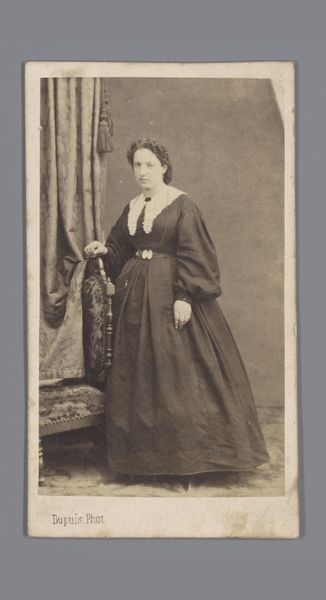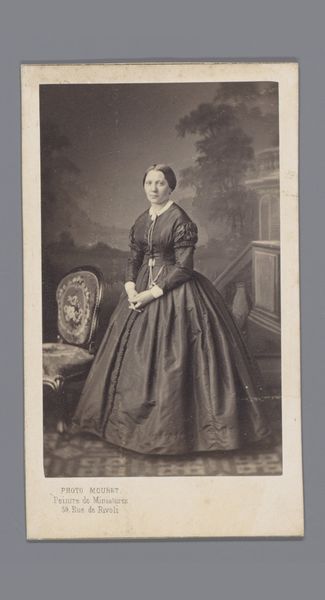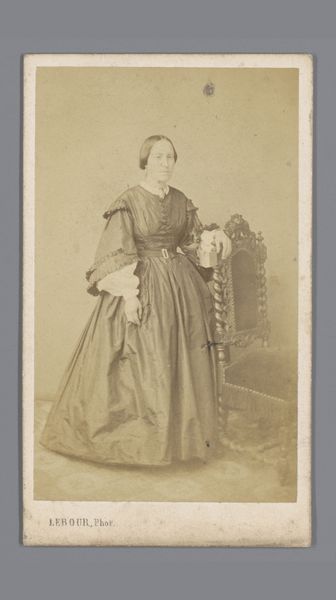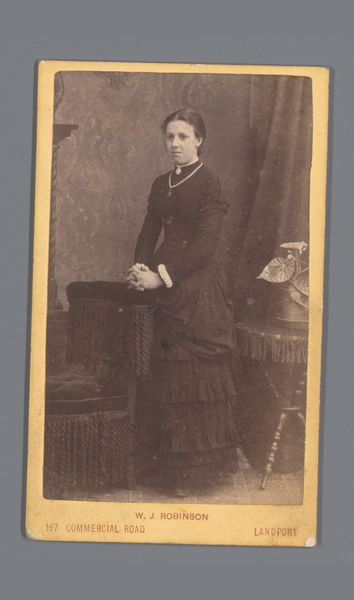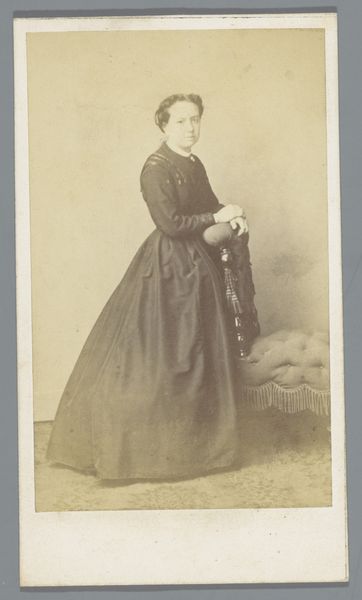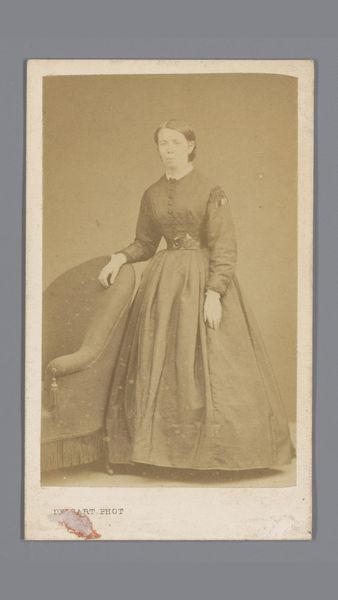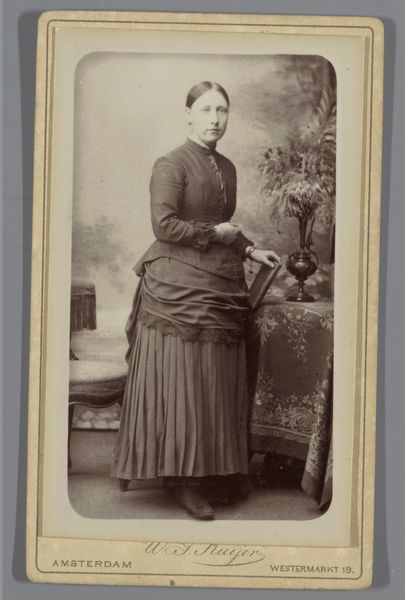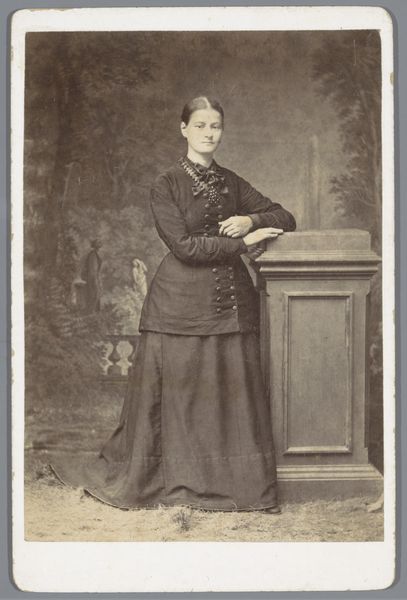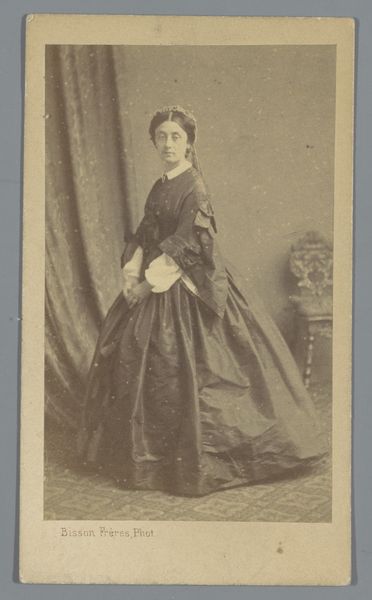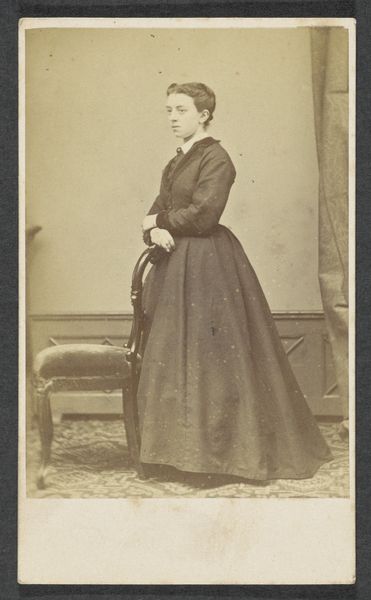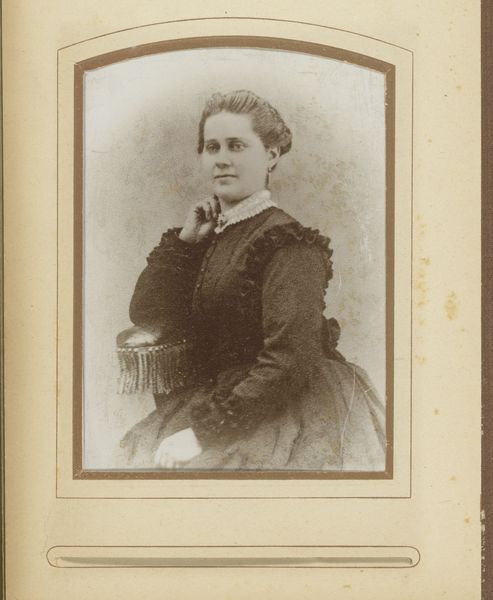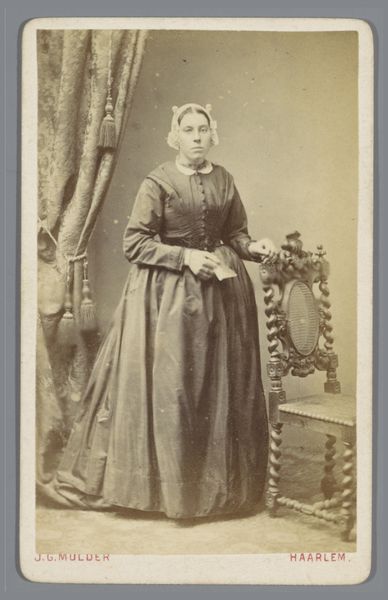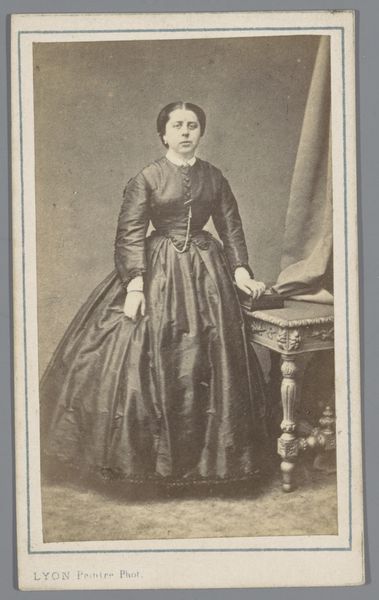
Portret van een onbekende vrouw in een donkere jurk en met een witte sluier 1891 - 1912
0:00
0:00
photography
#
portrait
#
photography
Dimensions: height 141 mm, width 100 mm
Copyright: Rijks Museum: Open Domain
Curator: Here we have a fascinating portrait photograph from the Rijksmuseum's collection. It's called "Portret van een onbekende vrouw in een donkere jurk en met een witte sluier," or Portrait of an unknown woman in a dark dress and with a white veil, attributed to Friedrich Carel Hisgen, and likely taken sometime between 1891 and 1912. What's your immediate reaction to it? Editor: There’s a wistful quality to it, a kind of melancholic grace. It’s almost ghostly. The muted tones contribute to that feeling, and there's something so reserved about her posture and expression... as if she's both present and distant simultaneously. And her dress and puffed sleeves are fascinating and somehow severe. Curator: Absolutely. That's something quite typical of the portraits from that period, a certain formality reflecting social expectations. Photography at this time, while increasingly accessible, still carried a certain weight, particularly in portraiture. These weren't casual snapshots. It also tells us about the rising bourgeois culture and the desire to emulate upper-class values. This level of formality would not have been widespread some decades earlier. Editor: The photograph possesses this beautiful tension – I feel a touch of both vulnerability and incredible poise emanating from her. Almost defiant. It makes me wonder, what were her hopes? What were her sorrows? Did she feel trapped by those very social expectations? Is the veil hinting towards mourning or, perhaps, some hidden romantic element? Her eyes… so steady, it almost feels like she sees me seeing her. You just want to rewrite the ending of her novel. Curator: It's amazing how much emotional resonance is captured. Considering her somber garments and the book she holds, one might read the image as emblematic of intellect, perhaps tied to religion or learning. What elevates it is not just the technical aspects of Hisgen’s work, but its unique status of a powerful, though enigmatic cultural statement from its time. The detail of the photo paper is a testimony on its own. Editor: It reminds us that every image, regardless of how commonplace or formal, holds within it an entire world of personal narratives, waiting to be teased out by curious onlookers and time travelers of a different kind like us, decades later. Curator: Indeed. We often tend to seek grand narratives in historical events but frequently overlook these smaller narratives of the people who lived those events, like this nameless woman in a sepia dream. Editor: Absolutely. This woman in her veiled silence now has all these imaginary conversations happening all around her because of a photograph. Now that’s poetry.
Comments
No comments
Be the first to comment and join the conversation on the ultimate creative platform.
